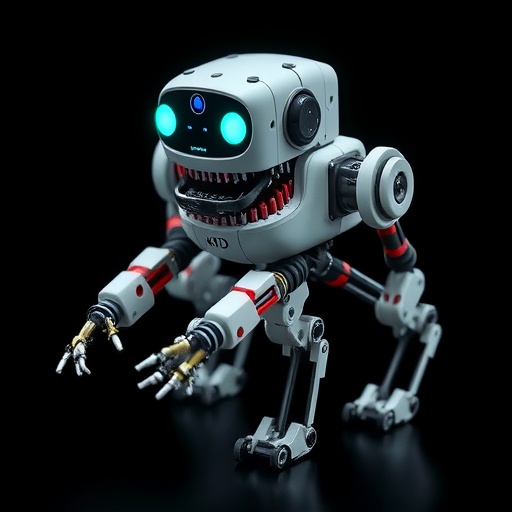In an era where artificial intelligence and robotics are rapidly reshaping industrial landscapes, a groundbreaking study published in npj Advanced Manufacturing has unveiled a transformative approach to autonomous robotic assembly. This innovative work, led by Liu, Q., Ji, Z., Xu, W., and their collaborators, showcases a pioneering method that leverages one-shot learning coupled with human-robot symbiotic interaction, propelling manufacturing into an unprecedented future of efficiency and adaptability.
Robotic assembly has long been a cornerstone of modern manufacturing, streamlining processes and enhancing precision. Yet, traditional robotic systems often falter when confronted with novel tasks or variations, necessitating time-consuming reprogramming and human intervention. This new research addresses those limitations head-on by integrating one-shot learning—a paradigm that enables machines to grasp new concepts or tasks from just a single example—into the robotic assembly framework.
One-shot learning, though already a subject of keen interest in the broader AI field, finds a novel embodiment here. The researchers devised an autonomous assembly system where robots can rapidly understand and replicate complex assembly instructions after observing a single demonstration by a human counterpart. This capability not only slashes the training time but opens pathways for robotic systems to handle ever-changing production requirements without extensive downtime.
Human-robot symbiotic interaction forms the backbone of this system’s impressive capabilities. Instead of rigid one-way commands, the robot and human operate in a fluid, mutually responsive relationship. During the assembly process, the robot attentively observes human actions and adapts its behavior in real-time, effectively learning the subtleties of the task and providing corrective feedback through its autonomous functions. This collaboration blurs the classical boundaries between human and machine roles, fostering a cooperative environment that magnifies efficiency.
The autonomous system employs sophisticated sensor arrays and vision systems that allow the robot to perceive fine-grained manipulations and tools involved in the assembly tasks. Combined with advanced algorithms, these sensory inputs enable the robot to deconstruct complex operations into manageable segments that it can quickly internalize from a single observation. This deconstruction is crucial for handling heterogeneous parts and configurations typical in modern manufacturing lines.
One of the remarkable outcomes of this approach is the system’s resilience to variability and errors. Where conventional robotic setups might halt or require recalibration when encountering unexpected changes, this one-shot learning mechanism equips the robot with adaptive capabilities. It can autonomously adjust its strategies, ensuring consistent quality and reducing scrap rates or rework interventions.
Moreover, this study highlights the implications of such a symbiotic system on workforce dynamics. By relegating monotonous, repetitive tasks to robots while humans provide intuitive guidance and oversight, the manufacturing environment becomes safer and more enriching. Human operators transition into higher-level supervisory and creative roles, harnessing their cognitive strengths alongside robotic precision.
Technically, the researchers deployed a hybrid architecture combining deep neural networks with probabilistic models to facilitate learning from sparse data. This hybrid ensures that the system generalizes well when introduced to new tasks while maintaining robustness against sensory noise and operational uncertainties. Dynamic motion planning algorithms further refine the robot’s movements, allowing it to execute delicate assembly gestures smoothly and without collisions.
The training pipeline designed by Liu and colleagues is notably efficient. Traditional robotic programming demands massive datasets and extensive time investments to teach a robot new procedures. In stark contrast, their one-shot learning model dramatically curtails this requirement by encapsulating entire assembly processes within a singular training example, effectively democratizing robotic deployment across diverse manufacturing sectors.
Beyond industrial assembly lines, the implications of this research resonate in fields like aerospace, electronics manufacturing, and even biomedical device fabrication, where precision, adaptability, and speed are paramount. By enabling robots to learn from minimal input yet maintain autonomous control, the boundaries of what robotic systems can achieve are substantially expanded.
Ethical and safety considerations also figure prominently in this development. The human-robot symbiosis incorporated rigorous protocols ensuring that robot actions are predictable and controllable. Safety interlocks and behavioral constraints prevent unintended operations, fostering trust amongst operators wary of autonomous systems supplanting human oversight.
In terms of scalability, this strategy promises to significantly reduce the barriers to automation adoption by small and medium enterprises. These configurations, often lacking massive budgets for custom robotic systems, can benefit immensely from robots that learn tasks rapidly and intuitively through direct human interaction.
Future directions posited by the authors include enhancing the richness of sensory modalities, such as haptic feedback, to further improve the fidelity of human demonstrations and deepen the robot’s contextual understanding. Integrating cloud-based collaborative learning platforms where robots can share and improve assembly knowledge collectively also stands as a transformative prospect.
Ultimately, the work by Liu and the team heralds a paradigm shift in robotic manufacturing technologies. By intertwining one-shot learning with seamless human-robot interaction, they pave the way for agile, intelligent factories that can adapt on the fly, empowering industries to keep pace with accelerating innovation cycles and customized production demands.
As manufacturing continues to evolve, this research not only exemplifies a monumental technical achievement but also serves as a testament to the potential harmony between human ingenuity and robotic precision. The fusion of these domains promises a future where complex assembly tasks are performed with unmatched speed, accuracy, and flexibility, revolutionizing how products are crafted around the globe.
Subject of Research: Autonomous robotic assembly enhanced by one-shot learning and human-robot symbiotic interaction.
Article Title: One-shot learning-driven autonomous robotic assembly via human-robot symbiotic interaction.
Article References:
Liu, Q., Ji, Z., Xu, W. et al. One-shot learning-driven autonomous robotic assembly via human-robot symbiotic interaction. npj Adv. Manuf. 2, 22 (2025). https://doi.org/10.1038/s44334-025-00030-3
Image Credits: AI Generated




